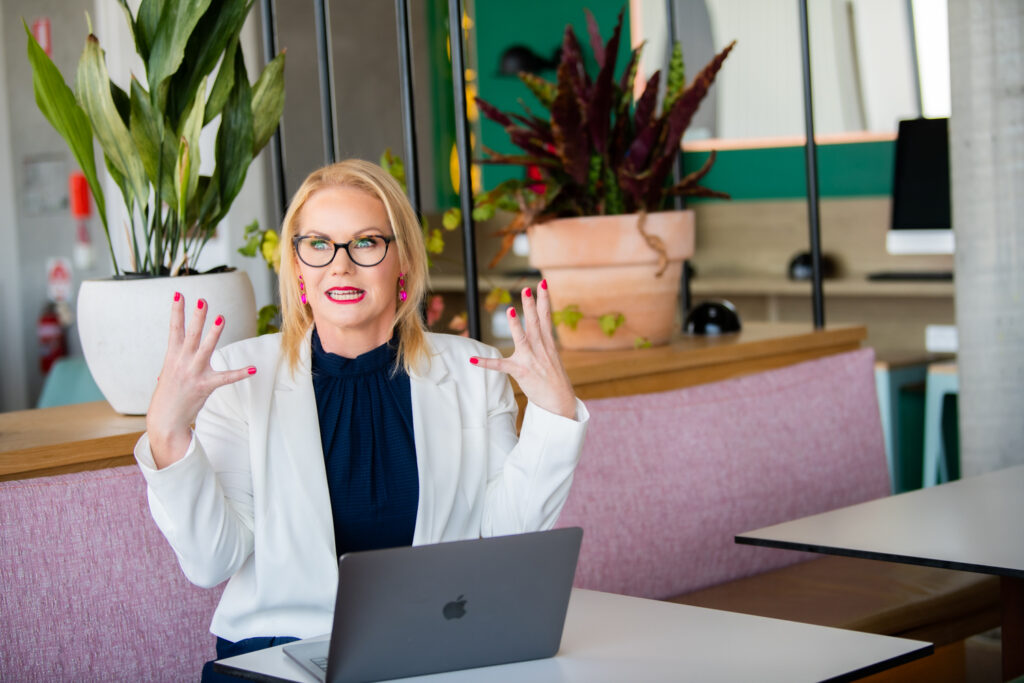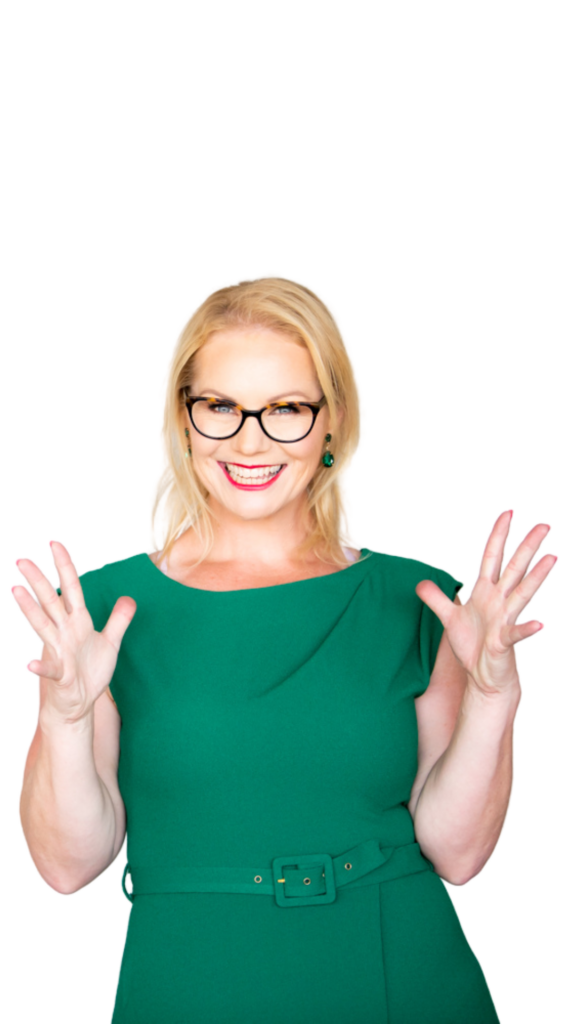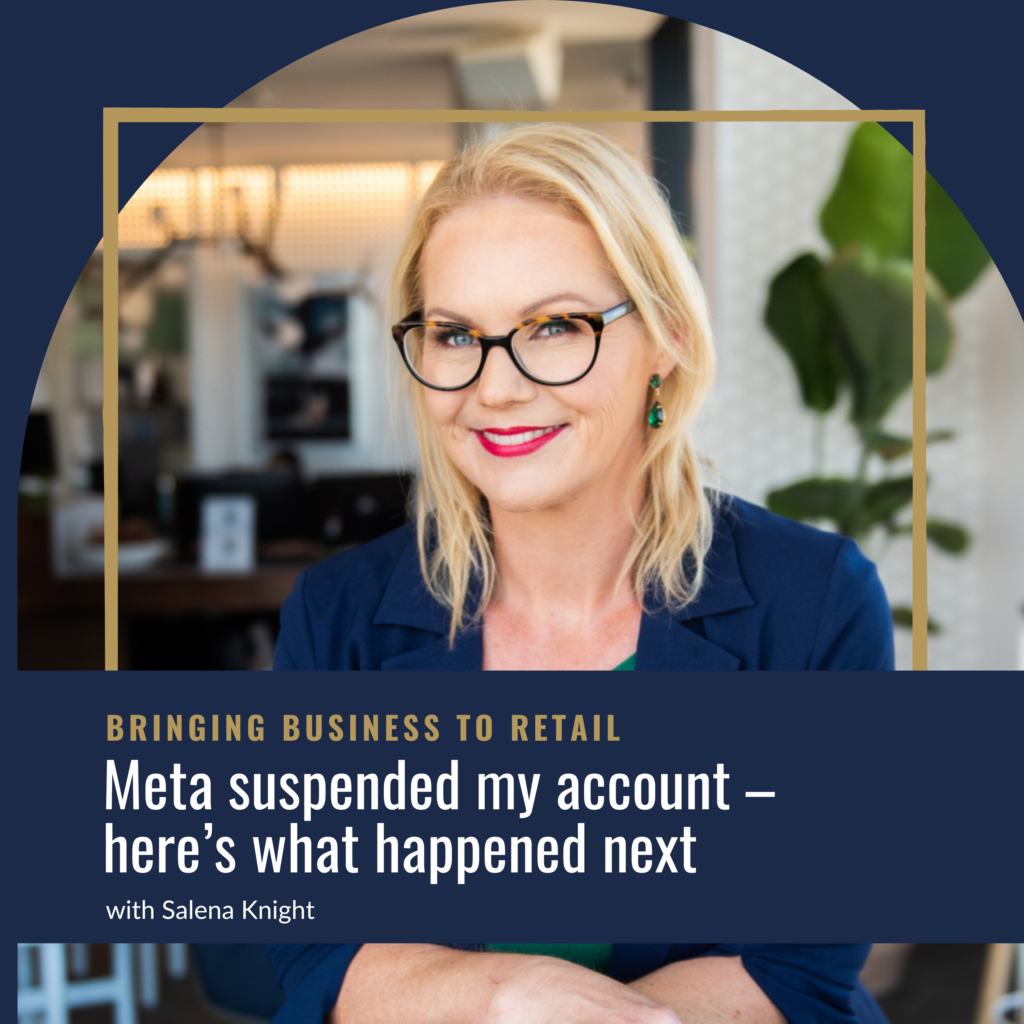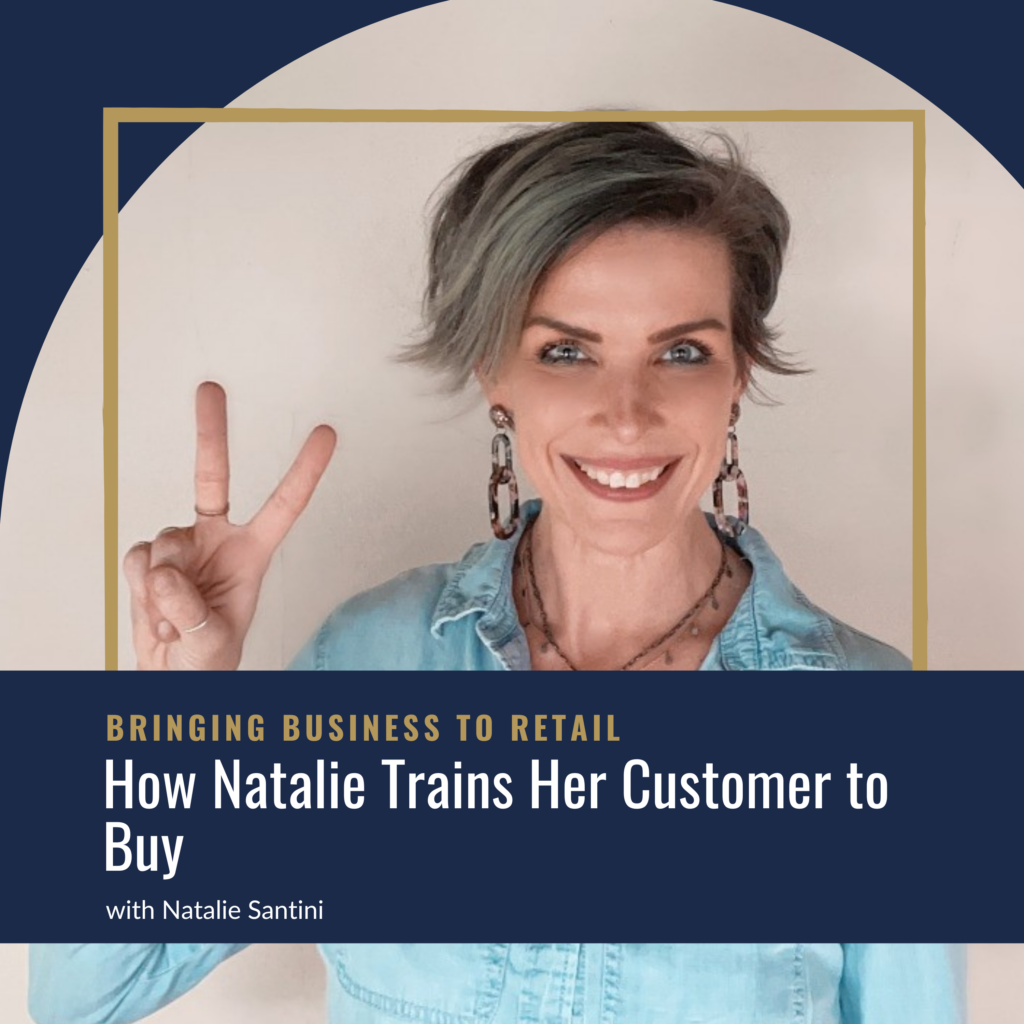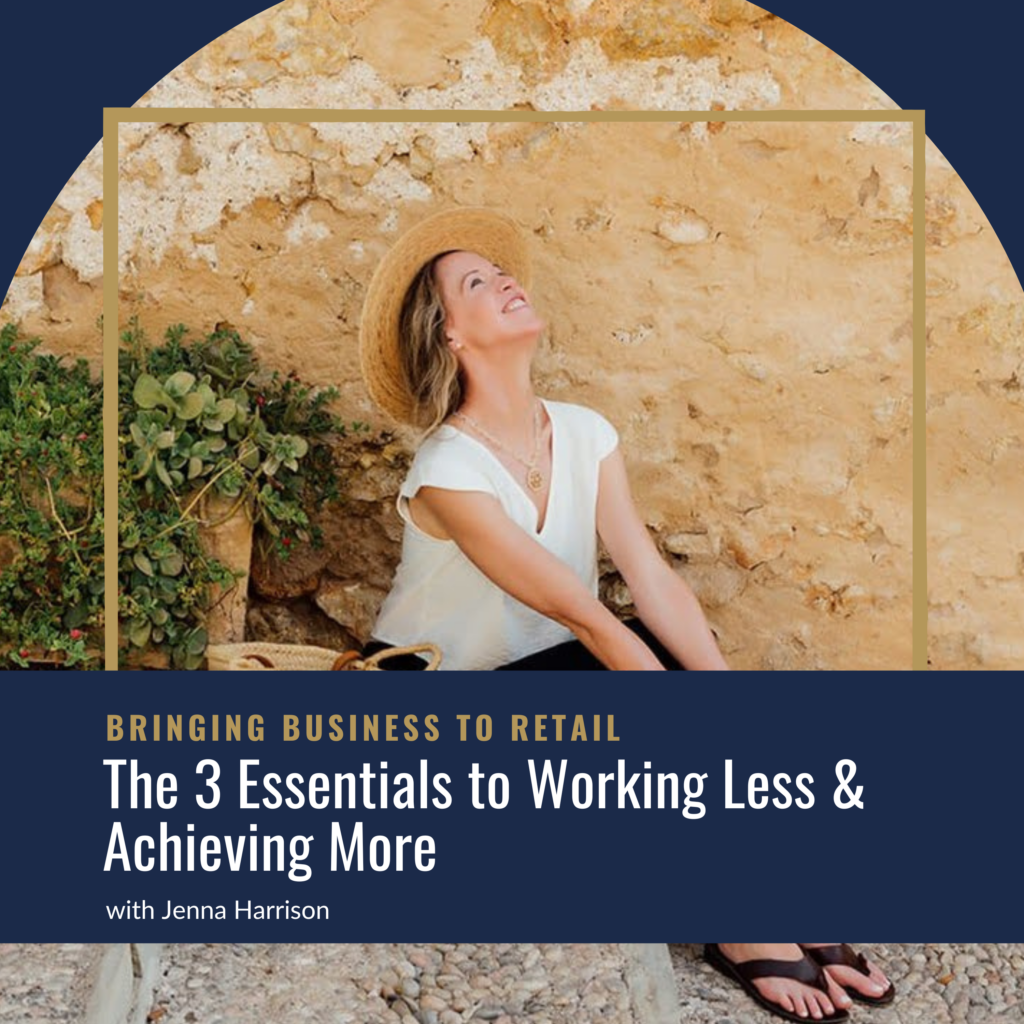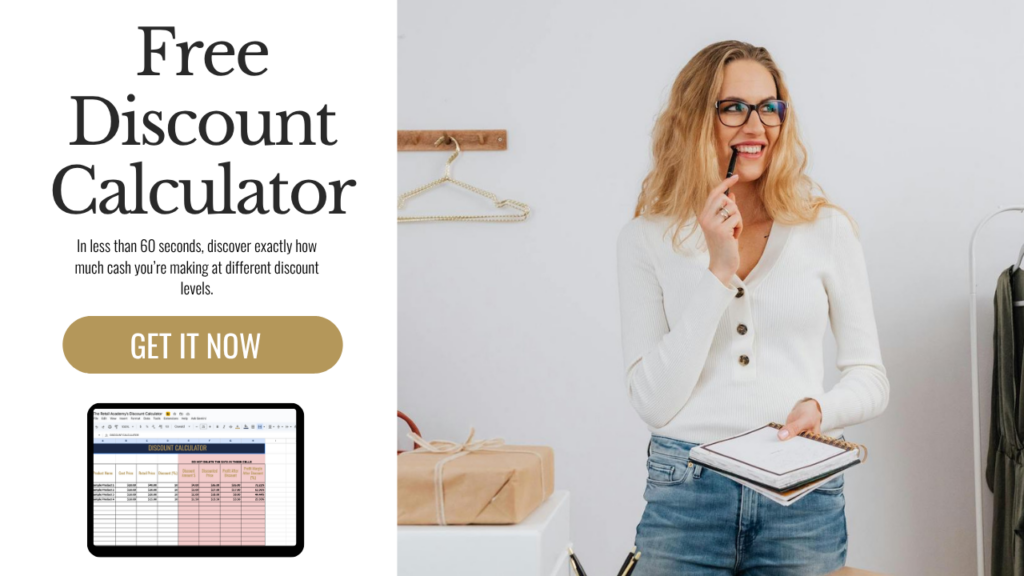
SHOW NOTES
Episode Summary
Stop setting promotion goals based on hope and start using data-backed strategies that actually work. Selena breaks down the exact system for reverse engineering profitable promotions using a real case study.
The Problem
Most retailers pick random revenue goals without checking if they’re mathematically possible. Hope is not a strategy – you need data-backed plans.
Real Case Study
- Retailer wanted $10,000 revenue
- Had 150 units of a $40 product
- Maximum possible: only $6,000 (150 × $40)
- Solution: Increase average order value to $66.67
The Formula
- Revenue Goal ÷ Average Order Value = Sales Needed
- Sales Needed ÷ Conversion Rate = Traffic Required
- Check inventory limits and shipping costs
Three Levers to Pull
- Increase Average Order Value – Upsells, bundles, cross-sells
- Sell More Units – More inventory or extend timeline
- Get More Traffic – Paid ads, more emails, SMS
Action Steps
Before Your Promotion:
- Calculate if your goal is mathematically possible
- Plan upsells and bundles strategically
- Write all marketing materials in advance
During Your Promotion:
- Track hourly for short promos
- Use multiple touchpoints (not just one email)
- Stay flexible and ready to pivot
Key Takeaways
- “You cannot scale on hope. You can scale on math because math doesn’t lie”
- “You can’t adjust what you don’t track”
- Success = Strategy + Tracking + Flexibility
Resources
- Scale Your Store Accelerator: salenaknight.com/accelerator
- Follow: @thesalenaknight on Instagram
LISTEN NOW on The Bringing Business To Retail Podcast
Have you ever set yourself up for a big juicy revenue goal when you've run a promotion? 10,000, 50,000, a hundred thousand? Only to end up halfway through thinking, huh, is this even possible? Maybe you've done everything right. You've written all of the emails, you've planned the post. Your promo is live, and you are off to an amazing start.
60% sold out just eight hours in. But here's the kicker. You're not at 60% of your revenue goal. You might be sitting at $40,000 when your goal was a hundred thousand dollars, and $40,000 is not 60% of a hundred thousand. It is 40%. So what's going wrong? Well, I can definitely put my hand up and say that before I worked this out, that was pretty much every promotion that I ran.
Massive goal, big disappointment on the backend. When I didn't get even close, I would start out excited by the new promotion and I would just pick a round number out of the air and say, that is my goal. That's what I'm gonna hit. Does that sound familiar? But what would end up happening? If you've done that, let me ask you, well, how often do you actually hit that number or even worse, realized halfway through.
That it was never possible from the start. If that is feeling a little bit too close to home, then stick with me because today I'm gonna show you how to stop guessing and start reverse engineering your best promotion ever. No more crossing your fingers. No more using hope as a strategy because hope is not a strategy.
Today I wanna talk to you about achievable data backed targets and how you can hit them. Hey there. I'm Selena Knight. I'm a retail and e-commerce growth strategist, and welcome to the Bringing Business to Retail podcast where we talk all about different ways to grow your business yourself, and of course your bank account.
And today's topic, the difference between a successful promotion that fills your bank account and one that leaves you wondering what the heck went wrong. So if you are running any kind of promotion without a target in place, you are literally setting yourself up for failure. But even worse than that, setting a revenue goal without a plan to get there, that's not a strategy that is literally just a gamble.
And I see it all the time. Retailers saying things like, I wanna make $10,000. I wanna make $50,000. I wanna make a hundred thousand dollars on this promotion. And then I ask this question, how many products do you need to sell to get there? At what price, and so how much traffic will you need? And usually there is a really long pause because here's the thing, you cannot scale on hope.
You cannot trust that you are gonna hit that goal. If you haven't done the math, you can scale on math because math doesn't lie. Now let me share a really quick example, because if you hate math and you're like, oh my God, here she goes with the numbers again. I'm going to make this so ridiculously simple for you.
One of our Scalia store accelerator retailers had a goal. $10,000 in revenue was her good goal. $15,000 was her best goal. So one of the things that we do is we set good, better, best goals. So Good was like, you know, yeah, if I get there, I'll be happy. Better is like, okay, this is, this is what I kind of, you know, this is what I really wanna get to.
And best is like, if everything works out like that is the number that I hit and I'm gonna be jumping for joy. So she had 10, 12, and half and $15,000. She had an upcoming product promotion. The item was $40. And so I grabbed my calculator like I always do, and I said, all right, so $10,000 divided by $40, that's 250 sales that you need to make.
And she looked at me and she said, uh, I've only got 150 products. If you are better at doing air math than I am, then straight away you can see the problem, even if every item sold. She had 150 products at $40 each. She could only make $6,000, not the $10,000. That was only her good goal. But the thing is, she's not alone, and this is where so many promotions fall apart.
The numbers just aren't there to support the goal. But here's the thing. We didn't just give up. We sat down and we created a plan and we asked, alright, so how could we still make it work? How could we still get the $10,000 goal with just 150 units? And obviously to me the answer is very clear. We had to increase the average order value.
Now I know that when you run a promotion, you quite often get people adding other things in, but you can't always count on that. So unless you have the data to back that, you know, when I run a promotion for this product, it's a $50 product, and generally what we see is we get approximately $10. We have an average order value of $60 when we promote this product.
If you don't have that data, then you can just assume that the people are going to buy the, in this case, the $40 product. You can't hope to hit the 10,000 if you literally can only make six. You have to put a plan in place, so to make $10,000 with only 150 products, the average order value had to go from $40 to $66 and 66 cents.
So we worked backwards. Could we add, add an upsell? Could we bundle some products together? Could we offer an irresistible add-on? Yeah. A spoiler alert. Yeah, we could. Because when you stop guessing, when you stop hoping, and you start working backwards, you move from wishful thinking to a real achievable plan.
A plan that has a chance of making you the money. Look, throwing up a promotion without a plan is like trying to bake a cake without a recipe. You might be amazing at it. You might get lucky, you might have the best cake in the world, but the better than good chances are you're going to end up with a hot mess.
So I wanna work you through exactly how we tackled this $10,000 goal and how you can approach this when you are running a promotion. So. In case you hadn't realized, the first part is starting with the end goal, but not just pulling it out of thin air. So in this case, we started by defining those good, better, and best targets, and not just by revenue, but then looking at how many units do we have to sell, what would the average order value be and what was actually possible based on the inventory that we had.
Again, if you're running a promotion for a product. And you don't have enough of that product to hit the goal, then this is what you need to look at. You need to look at, all right, well, how are we gonna hit that goal? We have to have that strategy in place. So then we factored in all of the important stuff, inventory limits, which is what we're just talking about.
How much product do we have to sell? The cost of goods also important because we wanna make some money. The shipping. To send this out to our customers and all the fees and things that are associated. So all these things that eat into your margins if you are not paying attention. So in this case, we needed to be very mindful of the products that we put together as upsells and cross sells, because choosing the wrong product would end up costing way more in shipping Now.
A lot of retailers offer flat rate shipping and you've worked this out based on your average, on a value and the average size of the product that you're shipping. So, you know, on average parcel might, might weigh one kilo or half a pound and this is what you get charged for it. Yes, there are gonna be some that are more, and yes there are.
There are gonna be some that less you, you win some and you lose some. But in this particular case, the item was quite small and quite lightweight. So if we chose a heavy product or a bulky product to promote this product, so if we chose something that was heavy and bulky as our targeted upsell or cross-sell, what was it going to end up happening?
If. Is the combined items would push it up into the next shipping bracket? I think it would go from like $10 to $12. That is an issue because the idea here is we want to increase the average on a value, but we don't wanna lose out money on the backend in terms of profit because the shipping's gone up.
So if you have a flat rate shipping of $10 and you are having to pay $12 to ship it, then that's not a great place to be. So really taking this considered mindset of if I am adding upsells, cross sells bundles, have I factored in how I'm going to ship that if you ship product? Of course. Okay, so end goal sorted.
Next, reverse engineering the numbers. And remember, the math always comes first. Even if you're not a huge math fan. This stuff is ridiculously simple. What is our revenue target? And divide that by our average order value. That is how many sales that we needed. We just went through that. So how many sales do we need?
Divided by our conversion rate online or in store. It doesn't matter. What is your conversion rate that is gonna give you how many people need to come to your website or come to your store. In our case, in our case, this was an e-commerce store. So to hit $10,000 with a $40 average or a value, we needed 250 sales, but we didn't have 250 units.
We only had 150 units. So with our 150 units, we had to get that average order value up to $66 and 66 cents. Now with an online conversion rate of 2%, let's get our little calculators out. To get 150 sales, we need 7,500 visitors during that promotion. Huh? 7,500 people have to come to our website to get 150 sales.
That is your traffic goal. And this can be the same in store if you have a, hopefully not a 2% conversion rate in store. But if you have a 60% conversion rate in store, you would just reverse engineer math and you would, you would know how many people need to be coming in the door every single day. This is not a hope.
This is not a guess. It is a fact and it is something that you can measure. And if you do not have the people coming in the door, if you do not have the people coming to your website, you aren't going to hit the goal. It's as simple as that. This is the power of reverse engineering. We have something to work towards.
We have something to measure, and if we aren't hitting the targets, we know we need to jump in and change. So the inventory told us how many units we could sell. The average order value told us how much each customer needed to spend and the conversion rate told us how much traffic we were going to have to drive.
No guesswork, clear actionable numbers. Alright, so we've got the end goal. We've reverse engineered the math. Next up. It's time to start mapping out the marketing assets in advance. He here in advance, no more scrambling around mid promotion. We rewrote all of the emails. We plan the social media posts. We scheduled the reels and the stories because this is where so many people go wrong.
They run a promotion, they post it once on social media. They send out one email, and then they wonder why there's crickets. Because you and I both know that you can get an email and. If you're just not in the mood to, if you can see it from your favorite retailer and you're like, oh yeah, I just don't have time right now, I'm not interested.
You just hit delete. It doesn't mean you unsubscribe, but you just hit delete, or you just scroll past and you think I'll come back to that later. One email doesn't cut it. One social media post doesn't cut it. So we even went a little bit further because we knew that there were limited number of units and we prepped the urgency messages, like more than 50% are sold out, and we put a paid ads budget.
It was only small behind the offer because. We knew that seven and a half thousand people were not going to come to the website in that short period of time, or there was a very good chance that that wasn't, the data did not show us, we would get that number of eyeballs on our offer. So speaking of offers that was critical for this promotion, and it should be for yours as well.
So pre-plan, those upsells, those bundles, those cross sells. In this case it came up because we knew the inventory was capped and she had to lean on the average order value. So then we looked at the upsells and the cross sells that we could add. Could we create some bundles instead? Were there post-purchase upsells?
That would make sense. We weren't waiting until we were in the thick of the promotion to figure that stuff out. The plan was in place before we hid. Go, because there are really only three ways to move the needle in your result. When it comes to a promotion, you either increase the average order value, you sell more units, you sell more stuff, or you get more eyeballs to your website or in your door.
But here's the golden rule, you can't adjust. What you don't track, I cannot say this more often. If you don't have these numbers, then you do not know what you need to fix. You do not know what you need to leverage. If something is working well, you don't know what to do more of. And trust me, things will need adjusting.
- Now, remember, when you're doing a promotion, most sales are going to happen in the first few hours and the last few hours. The middle is what I call the pit of despair, the valley of despair, but that is why we keep tracking daily and sometimes even hourly. If you're doing a 48 or 24 hour promotion, you need to be checking every single hour.
And you need to be ready to pivot at any point. Because a good plan doesn't mean sticking rigidly to the script. It means staying flexible. Alright, let's bring all of this together. So for this promotion, uh, the good revenue goal was $10,000 and 150 units that we had to sell. So here's what we did to create the plan that would work.
We didn't base it on hope. We based it on numbers. We didn't just pick a revenue goal. We checked out if it was even possible. With hundred 50 units and $40 per product, the most we could make is $6,000. We didn't wanna hit 6,000, we wanted to hit 10. So we adjusted the plan to make 10,000 with 150 units.
We had to get that up to $66. Then we just reversioned engineered how were we going to make that happen? We figured out those levers to pull. What upsells could we offer? What could we bundle together? What add-ons made sense? But we didn't stop there. Remember we looked at what that was gonna cost us on the backend?
Was it going to eat into our profits? If we had to ship more, we mapped out the traffic that we needed. With the conversion rate of 2%, we needed seven and a half thousand people to the website during the promotion to make the 150 sales. So we looked at how much traffic do we normally get in a promotion?
Is that enough? Do we need to get more people in? Were we prepared to ramp up with paid ads, more emails, SMS. Yes, we were. We rewrote all the marketing assets, the emails, the social media, the urgency posts, because scrambling mid promo, that is when things fall apart or you just don't do them. And if you don't do them, you will not hit your goal.
Or it's highly unlikely. I'm gonna say, you know, some things happen, stranger things have happened, but it's highly unlikely you're gonna hit the goal. So most importantly, we keep tracking hourly, sometimes daily. And we were ready to adjust, and that is your plan for a successful, profitable promotion right there.
But remember, staying flexible, watching the numbers, being ready to pivot. When something is working or something isn't working now, big goals are awesome. I am here for your big dreams. I will 100% support them, but let's just make sure those dreams are backed by a plan that can actually deliver. So next time you are setting a goal for a pure promotion.
Grab your calculator and not your crystal ball because success is not about luck. It is not about hope. It is about strategy. It is about leadership, and it is about tracking the numbers, and it's about having a plan, right, tracking that progress, pivoting when needed. If this episode gave you a bit of a light bulb moment, please hit subscribe, share it with a fellow retailer, or tag me from Instagram, and I would love to hear your biggest takeaway from this.
Oh, and please check out the scale of your store accelerator where you will learn more stuff like this. And. You can see when the next cohort is starting over at selena knight.com/accelerator. Until next time you've got this. So that's a wrap. I'd love to hear what insight you've gotten from this episode and how you're going to put it into action.
If you're a social kind of person, follow me at the Selena night. And make sure to leave a comment and let me know. And if this episode made you think a little bit differently or gave you some inspiration, or perhaps gave you the kick that you needed to take action, then please take a couple of minutes to leave me a review on your platform of choice.
Because the more reviews the show gets, the more independent retail and e-commerce stores just like yours that we can help to scale. And when that happens. It's a win for you, a win for your community, and a win for your customers. I'll see you on the next episode.
Share this episode
Watch The Video


